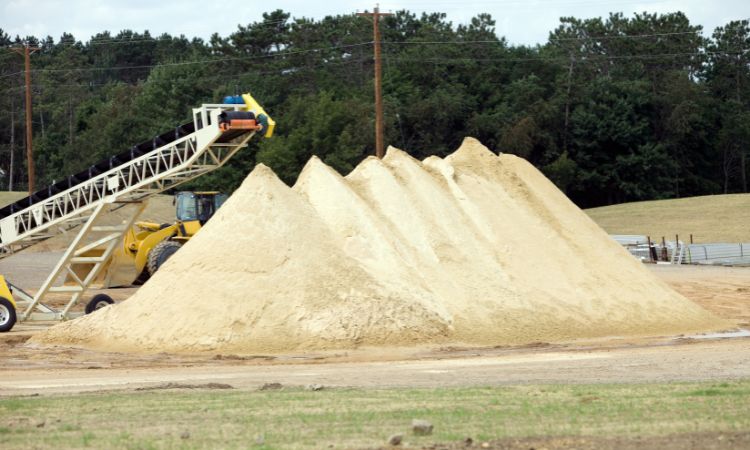Booming Frac Sand Market Insights
The frac sand market size has been experiencing significant growth, with a valuation of approximately USD 9.61 billion in 2024. Projected to expand at a robust compound annual growth rate (CAGR) of 7.50%, the industry is expected to reach USD 19.81 billion by 2034. As a crucial component in hydraulic fracturing (fracking) for shale oil and gas extraction, frac sand plays a pivotal role in optimizing hydrocarbon flow efficiency.
With shale oil and gas production continuing to expand, the demand for high-quality proppants like frac sand has surged. Advanced hydraulic fracturing techniques have further elevated the need for premium frac sand, ensuring maximum extraction efficiency and market stability. Leading energy firms are heavily investing in innovative proppant solutions, supply chain improvements, and strategic acquisitions to harness the industry’s immense potential.
Key Growth Drivers
Surging Demand for High-Quality Proppants
The evolution of hydraulic fracturing has intensified the need for premium-grade frac sand, particularly high-purity silica sand. This type of frac sand offers superior crush resistance and sphericity, ensuring that fractures remain open and allowing hydrocarbons to flow efficiently. Additionally, oil and gas operators are shifting toward finer mesh sand, which enhances well permeability and extraction performance.
Domestic Production Expansion: Aiming for Self-Sufficiency
The push for cost-effective, locally sourced frac sand has led several nations to bolster domestic production. North America, particularly the United States, dominates global frac sand output, with companies investing in state-of-the-art mining and processing facilities. This shift reduces reliance on imports, enhances energy security, and stabilizes supply chains amid fluctuating global market conditions.
Advancements in Logistics and Transportation
Efficient logistics play a critical role in the frac sand supply chain, ensuring smooth and timely delivery to drilling sites. Companies are investing in rail networks, trucking solutions, and storage facilities to streamline operations and reduce costs. The development of last-mile trucking solutions and strategically placed transloading terminals has further improved supply chain efficiency, minimizing operational bottlenecks.
Market Trends: Shaping the Future
Shale Energy Revolution: A Driving Force
The global shift toward shale energy production remains one of the primary catalysts for frac sand market expansion. Technological advancements in horizontal drilling and hydraulic fracturing have unlocked vast shale reserves, leading to a surge in proppant demand. Countries with significant shale reserves, particularly the U.S. and Canada, are at the forefront of this boom.
Sustained Demand from Oil and Gas Sector
As global energy demands rise, the oil and gas industry continues to invest in frac sand mining and processing operations. The expansion of unconventional drilling projects, particularly in developing economies, ensures steady frac sand consumption. This ongoing demand supports consistent industry growth and innovation.
Environmental Concerns and the Push for Sustainable Solutions
With hydraulic fracturing facing environmental scrutiny, companies are prioritizing eco-friendly solutions. Emerging technologies, such as frac sand recycling and alternative proppants, are gaining traction to reduce environmental impact. Additionally, innovations in water conservation and waste management are fostering sustainable fracking practices, ensuring regulatory compliance and industry longevity.
Market Segmentation
By Product Type
- White Sand: High-purity silica sand with superior strength, ideal for deep wells requiring high-pressure resistance.
- Brown Sand: A cost-effective alternative with lower silica content, best suited for shallower wells with moderate pressure resistance.
- Specialty Proppants: Includes resin-coated sand and ceramic proppants designed for extreme drilling conditions requiring high-performance fracking solutions.
By Application
- Oil Exploration: Widely used in drilling operations to maximize oil extraction efficiency.
- Natural Gas Exploration: Rising global demand for natural gas has fueled increased frac sand consumption in shale gas drilling projects.
- Other Applications: Includes unconventional drilling techniques and enhanced oil recovery methods where frac sand plays a vital role.
By Region
- North America: The dominant market, driven by extensive shale oil and gas production in the U.S. and Canada, along with major logistics infrastructure investments.
- Europe: While shale production remains limited, growing exploration in the U.K. and Poland presents new market opportunities.
- Asia Pacific: Increasing energy demands and unconventional oil and gas projects in China, Australia, and India are fueling regional market growth.
- Latin America: Shale exploration in Argentina and Brazil is driving frac sand demand as energy production expands.
- Middle East & Africa: Gradual adoption of hydraulic fracturing techniques is leading to a steady increase in frac sand demand.
Industry Analysis:
SWOT Analysis
Strengths:
- Rapid growth in shale production
- Advancements in hydraulic fracturing techniques
- Significant investments in supply chain optimization
Weaknesses:
- Environmental concerns related to fracking
- Market instability due to oil price fluctuations
- High water consumption and regulatory restrictions
Opportunities:
- Rising energy demands in developing nations
- Innovations in proppant technology and sustainable fracking
- Increased investments in frac sand recycling initiatives
Threats:
- Strict fracking regulations in various countries
- Growing competition from alternative proppants
- Geopolitical uncertainties affecting oil and gas production
Porter’s Five Forces Analysis
- Threat of New Entrants: Moderate; requires high capital investment and regulatory approvals.
- Bargaining Power of Suppliers: High; premium-quality frac sand reserves are controlled by a few key suppliers.
- Bargaining Power of Buyers: Moderate; oil and gas firms influence pricing but require high-quality proppants.
- Threat of Substitutes: Low; frac sand remains the most cost-effective proppant in fracking operations.
- Industry Rivalry: Intense; companies compete on price, quality, and logistical capabilities.
Competitive Landscape: Key Industry Players
- CARBO Ceramics Inc.
- Covia Holdings Corporation
- Badger Mining Corporation
- Smart Sand, Inc.
- U.S. Silica
- Hi-Crush Inc.
- McLanahan
- American Silica
- Black Mountain Sand
- Alpine Silica
- PALANDEH SAF
- Alborz Silica
- Henan Zhengzhou Mining Machinery Co., Ltd.
- Sibelco
- Resico India Pvt. Ltd.
Future Outlook: Innovation and Market Expansion
The frac sand industry is set for sustained growth, driven by continuous technological advancements, expanding shale production, and increasing global energy needs. As the sector moves toward eco-friendly fracking practices, improved proppant solutions, and optimized logistics infrastructure, market players are well-positioned for long-term success.
Over the next decade, strategic investments in innovation, regulatory compliance, and cutting-edge extraction techniques will shape the industry’s trajectory. With a strong focus on sustainability and operational efficiency, the frac sand market is expected to play an essential role in global energy production, ensuring its continued relevance in the oil and gas sector.






